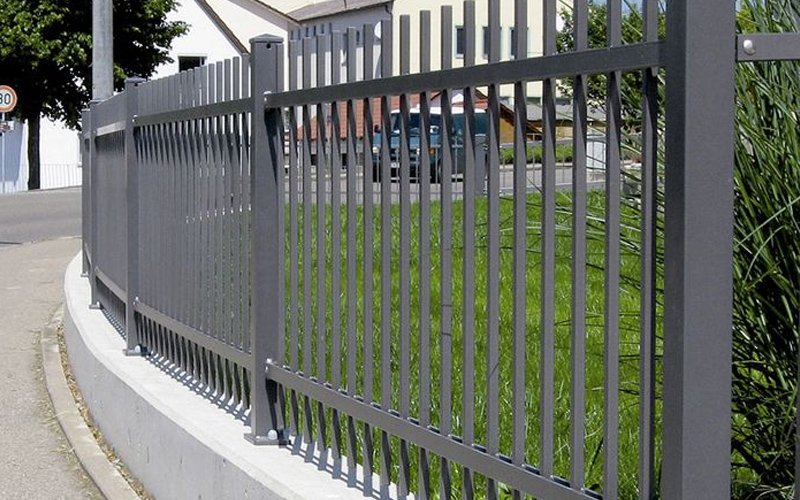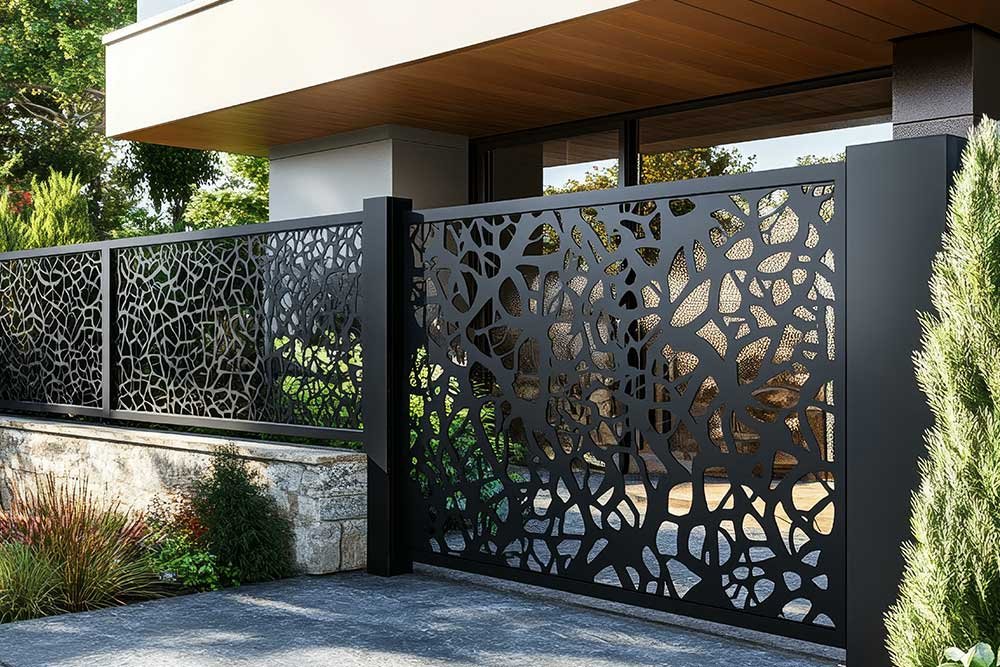In the fields of architectural decoration and safety protection, fencing is an indispensable part. From traditional wooden and wrought iron fences to the diverse range of new materials used in fencing today, people’s requirements for fences have expanded beyond simple protective functions. There is now a greater emphasis on multiple characteristics such as aesthetics, durability, and environmental friendliness. Among the many fencing materials, aluminum fencing stands out with its unique advantages and has become a popular choice for modern architectural decoration.

I. Characteristics of Aluminum Fencing
(1) Excellent Corrosion Resistance
The surface of aluminum can naturally form a dense aluminum oxide protective film. This film is like a sturdy armor, effectively resisting the erosion of rainwater, moisture, acids, alkalis, and other substances. Whether in harsh environments with high salt spray along coastal areas or in regions with severe industrial pollution, aluminum fencing can remain intact for a long time. Unlike wrought iron fences, it does not rust or corrode, significantly extending its service life. According to relevant statistics, high-quality aluminum fencing can last for 20 – 30 years or even longer under normal use, far exceeding many traditional fencing materials.
(2) Lightweight yet High-strength
Aluminum has a relatively low density, only about one-third that of steel. This makes aluminum fencing lightweight, facilitating easier handling and installation, and effectively reducing construction difficulties and labor costs. At the same time, through advanced processing techniques such as extrusion molding and forging, aluminum fencing can achieve high strength, sufficient to meet daily protection needs. Even when subjected to a certain degree of external impact, it is not easily deformed or damaged, providing users with reliable safety guarantees.
(3) Beautiful and Diverse Appearance
Aluminum fencing has strong plasticity in appearance design. Through surface treatment processes such as powder coating, electrophoretic coating, and fluorocarbon coating, it can present a rich variety of colors and textures. Whether it’s classic black, white, and gray or vibrant red, orange, and blue, it can meet the aesthetic requirements of different architectural styles and users. In addition, aluminum fencing can also create various patterns and styles, such as European, Chinese, modern minimalist, etc., through carving, hollowing, and styling designs, perfectly integrating with the surrounding environment and becoming a beautiful scenic line.
(4) Environmentally Sustainable
Aluminum is a recyclable metal material. The energy consumption during the recycling process is relatively low, and recycled aluminum can be reprocessed into various aluminum products, realizing the recycling of resources. Using aluminum fencing is in line with modern environmental protection concepts, reducing the consumption of natural resources and the pollution of construction waste to the environment. It is a green and environmentally friendly choice of building materials.
II. Application Scenarios of Aluminum Fencing
(1) Residential Courtyards
In residential courtyards, aluminum fencing can not only divide spaces and ensure family safety but also enhance the overall aesthetics of the courtyard. Exquisite aluminum fencing combined with green plants and flowers creates a warm and comfortable living atmosphere, making home a haven for the soul. Meanwhile, its corrosion resistance and low maintenance requirements mean that residents do not need to spend a lot of time and effort on maintenance, allowing them to enjoy a better life with ease.
(2) Commercial Establishments
In commercial places such as shopping malls, office buildings, and hotels, aluminum fencing can be used to decorate the outer boundaries, staircase handrails, balcony railings, and other parts. Its stylish and beautiful appearance can enhance the image and grade of the commercial establishment, attracting customers. The sturdy and durable characteristics ensure the safety of personnel and property, providing a guarantee for the smooth operation of commercial activities.
(3) Public Facilities
Public facilities such as parks, schools, and hospitals have high requirements for the safety and aesthetics of fencing. Aluminum fencing, with its excellent performance, becomes an ideal choice for these places. In parks, beautifully shaped aluminum fencing complements the natural landscape. In schools and hospitals, safe and reliable aluminum fencing provides a reassuring environment for teachers, students, and patients.
III. Installation and Maintenance of Aluminum Fencing
(1) Convenient Installation
Aluminum fencing adopts a modular design. Components are connected by bolts, buckles, and other means. The installation process is simple and straightforward, eliminating the need for complex welding processes and greatly shortening the construction period. Professional installers can complete the installation quickly and efficiently, reducing the impact on the surrounding environment and residents’ lives.
(2) Low Maintenance Costs
Due to the good corrosion resistance and stain resistance of aluminum fencing, daily maintenance only requires simple wiping with clean water or mild detergents to maintain its bright and new appearance. Compared with the cumbersome maintenance work of wrought iron fences, which require regular painting to prevent rust, and wooden fences, which need anti-corrosion and anti-insect treatment, the maintenance costs of aluminum fencing are significantly reduced, saving users a lot of time and money.
IV. Development Prospects of Aluminum Fencing
With the continuous improvement of people’s requirements for architectural quality and living environment, as well as the increasing awareness of environmental protection, aluminum fencing, as a high-performance and environmentally friendly building material, will see a continuous growth in market demand. In the future, aluminum fencing will continue to innovate and develop, achieving more breakthroughs in material performance, appearance design, intelligent applications, and other aspects. For example, the research and development of aluminum composite materials with higher strength and better thermal insulation performance, the design of more personalized and artistic fencing shapes, and the integration of intelligent sensing technology into aluminum fencing to achieve the combination of safety protection and intelligent management.
Aluminum fencing, with its many advantages such as beauty, durability, environmental friendliness, and convenient installation and maintenance, demonstrates strong competitiveness and broad development prospects in the fields of architectural decoration and safety protection. Whether in residential homes, commercial establishments, or public facilities, aluminum fencing can add unique charm and practical value, becoming an indispensable part of modern architecture.



